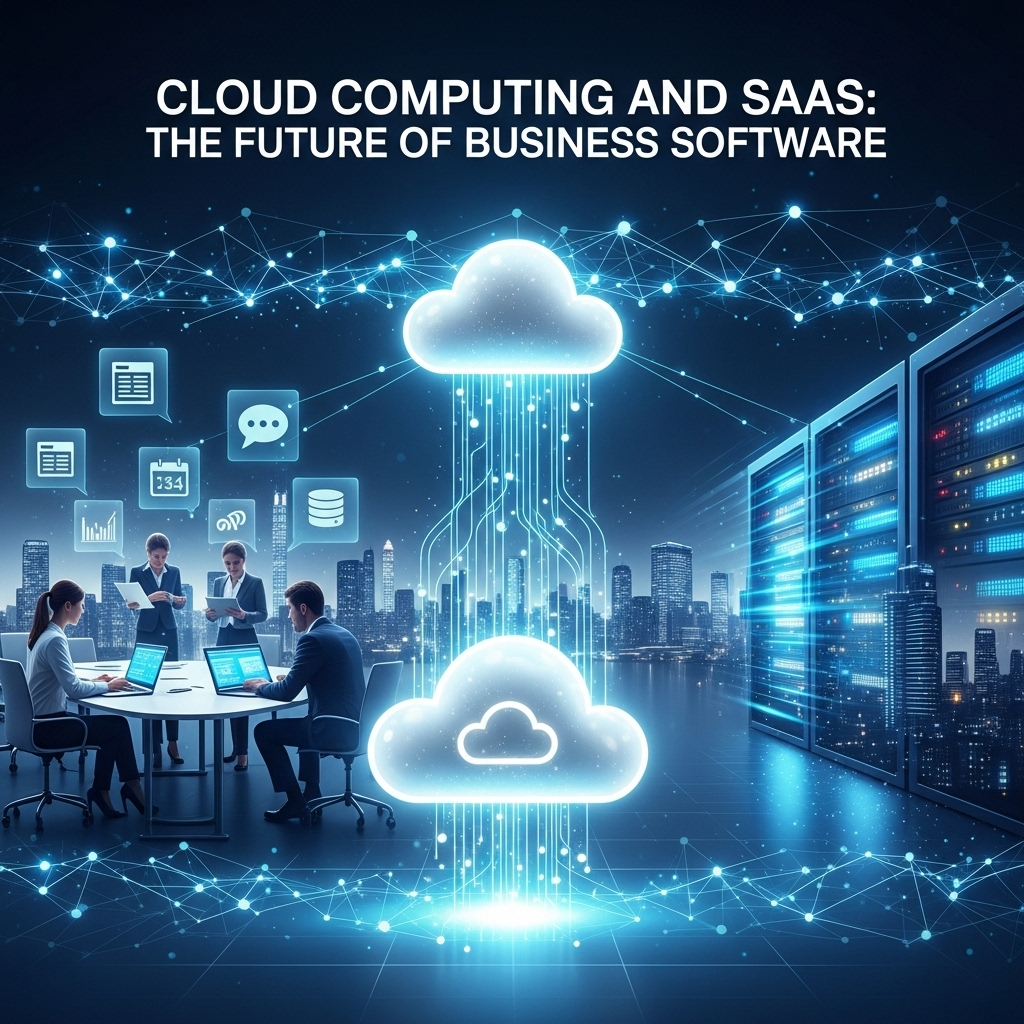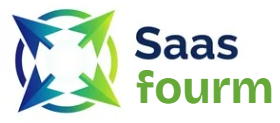Remember wrestling with server installations in a dusty closet while your competitors scaled effortlessly on the cloud? That scene is vanishing faster than dial-up internet. Software as a Service (SaaS) isn’t just changing business software—it’s becoming the bloodstream of modern commerce. Gartner forecasts the SaaS market will hit $300 billion by 2025, dominating 70% of cloud software adoption as companies prioritize agility over inflexible legacy systems newwavesolution.com. This seismic shift beats mere cost savings—it’s about building antifragile businesses that thrive amid disruption.
Unlike on-premises software demanding heavy upfront investment and specialized maintenance, SaaS delivers enterprise-grade tools through a subscription. Think of it like switching from owning power plants to plugging into the electrical grid: you pay for what you use while experts handle infrastructure headaches. For US businesses drowning in digital transformation pressure, SaaS transforms IT from a cost center into a strategic lever. The question isn’t whether to adopt SaaS—it’s how fast you can leverage it to outmaneuver competitors still shackled to 2010-era workflows.

Why SaaS Isn’t Just “Cloud Software” (The Critical Distinction)
Cloud computing is the foundation; SaaS is the smart apartment built on it. Too many executives conflate SaaS with generic cloud solutions, missing why it’s uniquely positioned to reshape business software. Public clouds (IaaS/PaaS) like AWS or Azure provide raw infrastructure—valuable but requiring significant technical lifting. SaaS, however, delivers complete business functionality out-of-the-box: Salesforce isn’t just “cloud CRM”—it’s AI-driven sales intelligence, compliance-ready data architecture, and seamless Zoom integration served via browser.
| Deployment Model | Upfront Cost | Time-to-Value | Core Focus | Ideal For |
|---|---|---|---|---|
| On-Premises | High ($100k+) | 6-18 months | Infrastructure control | Highly regulated industries (e.g., defense) |
| IaaS/PaaS | Medium | 3-12 months | Custom app development | Tech-native companies (e.g., startups) |
| SaaS | Low ($0 setup) | < 30 days | Business outcomes | 95% of commercial use cases |
This distinction explains why 85% of US enterprises now prioritize SaaS over custom builds. As Anh Vuong of New Wave Solutions observes:
“Unlike custom-built software, SaaS offers predictable OPEX, continuous vendor updates, and browser-based access—all critical for US companies racing digital transformation.” newwavesolution.com
The real differentiator? Specialization. While generic cloud platforms force you to build business logic, SaaS solutions embed industry-specific workflows. A healthcare SaaS like Epic handles HIPAA compliance natively; accounting SaaS like QuickBooks automates tax calculations for US states. This turns SaaS from mere software into embedded expertise—which is why it’s not just replacing on-premises tools but redefining what “business software” even means.
4 Unstoppable SaaS Trends Dominating 2025 (And How to Profit From Them)
AI That Doesn’t Require a PhD
Gone are the days where “AI” meant hiring data scientists to tweak models. Today’s SaaS tools bake AI into workflows invisibly. Salesforce’s Einstein automates lead scoring. Grammarly suggests edits as you type. These aren’t futuristic features—they’re table stakes for competitive SaaS in 2025. What’s revolutionary is the operationalization: AI now solves concrete business problems like “reduce customer support tickets by 30%” instead of showcasing technical prowess.
“Most operators aren’t prompt engineers. The real SaaS innovation isn’t AI models—it’s the action interface for human operators.”
— Henry Pray, on why successful 2025 SaaS focuses on workflow integration, not raw tech henrypray.com
Pro Tip: Audit your top 3 business processes (e.g., invoicing, onboarding). If your SaaS doesn’t automate decisions there—not just data entry—you’re overpaying. Example: Rippling doesn’t just store employee data; it auto-generates compliant offers based on role/location.
The Subscription Economy’s Second Wave
Early SaaS charged for “seats.” Modern SaaS monetizes business outcomes. Look at Shopify: basic plans are cheap, but critical features like fraud analysis or localized checkout (e.g., “Buy Now, Pay Later” for US shoppers) command premium pricing. This shift mirrors how Adobe killed Creative Suite sales by tying costs to actual usage value rather than licenses.
By 2025, 68% of high-growth SaaS companies use value-based pricing where costs align with results delivered. Examples:
- ZoomInfo: Pays only for verified contacts used in outreach
- Gong: Charges per rep based on deal size influenced
- Canva: Free tier for designers, premium for marketers needing analytics
This model thrives because it de-risks adoption—perfect for cash-conscious US businesses. But it demands deeper ecosystem integration: your SaaS must connect to CRM, billing, and analytics to measure impact accurately. If your tool lives in a silo, you’re missing the 2025 pricing revolution.
Low-Code as the New Competitive Moat
No-code tools like Bubble dominated early. Now, forward-thinking SaaS embeds low-code customization so clients self-serve complex workflows. HubSpot’s Operations Hub lets non-engineers build approval chains for expense reports. Airtable’s interfaces let managers create custom project trackers without IT tickets.
What makes this 2025’s game-changer? IT-business alignment. While only 35% of US companies had business-led tech initiatives in 2020, 74% do now zorbis.com. Low-code bridges this gap by letting domain experts (not just developers) optimize tools. As William Fitzhenry notes:
“SaaS platforms enabling low-code customization will dominate by letting businesses embed proprietary processes—turning software from a commodity into defensible IP.”
The catch: Balance flexibility with governance. Without guardrails, low-code becomes tech debt playground. Top SaaS vendors solve this with:
- Sandbox environments for safe testing
- Approval workflows for production changes
- Usage analytics to flag unstable configurations
If your SaaS calls itself “customizable” but requires developer tickets for basic tweaks, it’s already obsolete in 2025’s market.
Sustainable Cloud: The Hidden Differentiator
Sustainability isn’t just PR fluff—it’s a SaaS survival trait. AWS now charges carbon fees for high-emission workloads. Microsoft ties Azure discounts to renewable usage. By 2025, 43% of US enterprises require SaaS vendors to publish annual carbon reports zorbis.com. Why? Because inefficient apps directly impact profit margins via cloud costs.
Pro Tip: Audit your SaaS stack for “carbon leaks”:
- Tools triggering overnight data syncs (wasting compute hours)
- Uncompressed video assets tanking load times
- Redundant API calls from poorly integrated apps
Top performers like Snowflake auto-optimize data storage for carbon efficiency. The winner here? Your CFO—since energy-efficient SaaS often cuts cloud costs by 15-30%. Sustainability isn’t altruism; it’s operational excellence.
The Brutal Truth About SaaS Adoption (Most Leaders Ignore)
Integration Debt Is the Silent Killer
71% of failed SaaS rollouts trace back to poor integration—not the software itself howtobuysaas.com. Companies get dazzled by a shiny new tool, only to discover it can’t talk to their accounting system. The result? Manual data entry that erodes 40% of supposed time savings. True SaaS success requires designing around your ecosystem, not just picking “best-of-breed” apps.
Pro Tip: Run this integration litmus test before signing any SaaS contract:
- Does it have native integrations for your core systems (e.g., Salesforce, QuickBooks, Slack)?
- Can you automate data mapping (not just export CSVs)?
- Is there a self-service integration marketplace like Workato?
- What’s the estimated time to connect to one existing system?
If any answer is “no” or “more than 2 weeks,” you’re buying future headaches.
Security Theater vs Real Protection
SaaS vendors love shouting “SOC 2 compliant!” But savvy buyers know certifications alone don’t stop breaches. In 2025, ransomware attacks exploit SaaS misconfigurations—not infrastructure flaws. That “secure” HR tool becomes a liability if managers share login links via Slack. Real security means:
- Zero-trust architectures (Google’s BeyondCorp model)
- Automated permission pruning (revoking access after role changes)
- Context-aware access (blocking logins from high-risk countries)
Pro Tip: Demand these 3 security features during demos:
- User behavior analytics (flags suspicious activity like mass downloads)
- Just-in-time access (temporary elevated permissions, not permanent admin rights)
- Integrated breach response (auto-locks accounts when dark web credentials surface)
Tools like Snyk and Palo Alto Prisma Cloud now bake these in. Certifications are hygiene; these capabilities are your real armor.
Your 2025 SaaS Action Plan (No IT Degree Required)
Step 1: Ditch the “Software Inventory” Mindset
Stop thinking about SaaS as a list of apps. Instead, map tools to business outcomes:
| Business Goal | Current Tools | SaaS Gap | 2025 Solution |
|---------------------|--------------------|------------------------|------------------------|
| Reduce sales cycles | Salesforce + Excel | Manual lead assignment | Clari (AI routing) |
| Improve CX | Zendesk | No sentiment analysis | Forethought (AI replies)|
| Cut operational costs | Disparate SaaS | Integration debt | **Select unified platform** | If a tool doesn’t directly impact revenue, compliance, or customer retention—it’s tax deductible clutter.
Step 2: Negotiate Like a 2025 Pro
Legacy SaaS contracts trapped companies into 3-year terms with vague exit clauses. Today’s winners use these tactics:
- Benchmark pricing against G2’s SaaS Comparison Tool
- Demand exit clauses covering data portability and re-training costs
- Tie renewal to feature delivery (e.g., “15% discount if AI tagging launches by Q3”)
Most vendors will accept these—they’d rather retain you at lower margins than lose you entirely.
Step 3: Build Your SaaS Ops Team
SaaS sprawl requires dedicated oversight. Start small:
- SaaS Manager (oversees spending/integration)
- Compliance Liaison (handles GDPR/HIPAA across vendors)
- Workflow Designer (builds low-code automations)
This team prevents the “Frankenstein stack” where tools barely communicate. Companies with this role see 34% higher SaaS ROI abhishekanand.info
The Bottom Line: SaaS Isn’t Software—It’s Strategy
The future belongs to companies that treat SaaS not as applications, but as embedded business capabilities. When HubSpot helps startups close deals, Shopify empowers DTC brands, and Rippling automates HR compliance—these aren’t tools. They’re force multipliers letting resource-strapped teams punch above their weight.
“SaaS adoption rates have soared because it frees businesses from infrastructure burdens to focus on what matters: delivering customer value.”
— Chief Saasologist, How to Buy SaaS howtobuysaas.com
2025’s winners won’t just use SaaS—they’ll architect entire business models around it. Imagine a bakery where:
- Scheduling app predicts staffing needs from weather/sales data
- Inventory SaaS auto-orders flour based on reservations
- Loyalty program adjusts offers in real-time via POS integrations
This isn’t sci-fi. It’s happening today with tools like Toast and Square. The question isn’t whether cloud computing will dominate business software—it already has. The real challenge? Turning SaaS from a cost center into your most strategic asset.
Start by auditing one workflow this quarter. Identify where manual steps leak revenue. Then find the SaaS that doesn’t just automate—but reimagines—that process. Because in 2025, the companies winning won’t be those with the most software. They’ll be the ones who made software disappear into their competitive advantage.
